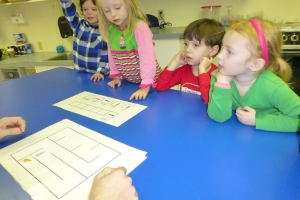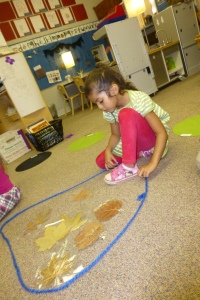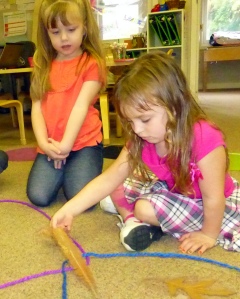Yesterday, Pre-k participated in our second annual “Hour of Code” event. We didn’t actually spend an hour on the project, but the computer programming that we played with was lots of fun! The four instructors (Dave Nasar, Dave Piemme and Jonathan Ringer from the Upper and Middle schools and our own Kate Webber) explained that computer programming was a simple as giving someone or something directions. The students’ first task was to help a wee paper mouse work its way through a maze to a piece of cheese. Small pieces of paper represented Up, Down, Left and Right. Each child took turns guiding the mouse along its path.
As the mazes became progressively more difficult, other “special” commands were introduced.
[vimeo 114038159 w=500 h=281]
After much practice, the children moved on to Kodable, an iPad app with similar parameters. For this task, the children directed a fuzzy creature through mazes while practicing planning, problem solving, the Scientific Method and visual-spacial skills.
If you are more curious about Hour of Code, check out Computer Science Education Week. Here is a short introduction found within their site:
We live in a world surrounded by technology. And we know that whatever field our students choose to go into as adults, their ability to succeed will increasingly hinge on understanding how technology works. But only a tiny fraction of us are learning computer science, and less students are studying it than a decade ago.
That’s why schools across the nation joined in on the largest education event in history: The Hour of Code. During Computer Science Education Week (Dec. 8-14), students will be amongst over 2 million worldwide spending one hour learning the basics.
See http://hourofcode.org for details.














